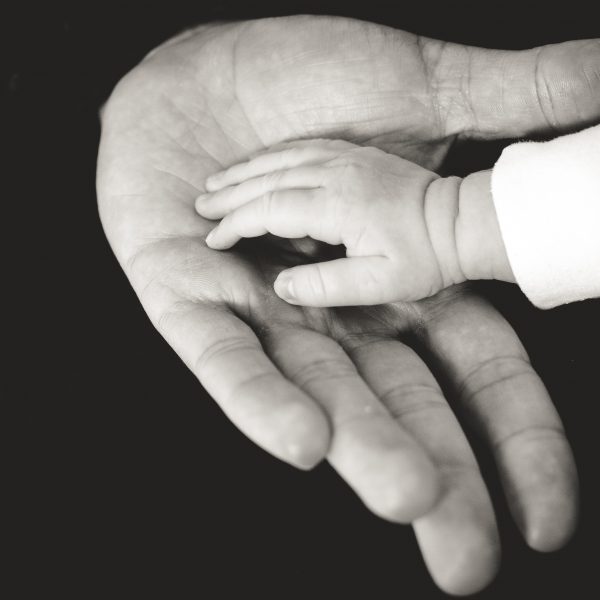What governments can do about the increase in family violence due to coronavirus
opinion
The views expressed by contributors are their own and not the view of The Sector.

Tackling a health crisis such as COVID-19, with society in lockdown can’t help but place families under strain.
It’s been reported family violence notifications to police nearly tripled in some areas of China’s Hubei province (where SARS-CoV-2, the virus that causes COVID-19 originated) during the lockdown in February.
Some family violence organisations in Australia are already reporting a rise in demand for services.
The federal government recently announced A$1.1 billion for mental health services, domestic violence support and Medicare assistance for people at home, and emergency food relief. This support is welcome but more practical and creative measures are also required to protect vulnerable families.
COVID-19 and vulnerable children
Prior to the pandemic, in 2018-19, about 170,000 children aged up to 17 years (around 30 out of 1,000) received child protection services. These services include investigations, which may or may not lead to substantiated cases of child abuse or neglect, care and protection orders, or out-of-home care placements.
Most of these children remain in their families of origin with social workers from government and community agencies, as well as teaching, medical and other professionals supporting these families and monitoring children’s safety.
But the social structures and services which normally support children and families – such as schools, parenting or mother’s groups, and family services – have been removed or are operating at reduced capacity.
Reduced service provision will amplify the pre-existing and COVID-19 related challenges that impact children’s safety. These include parental substance misuse, mental health problems and neglect.
Hard-to-detect types of abuse, such as child sexual abuse, are likely to increase. Studies show social isolation increases the risk for vulnerable children, allowing perpetrators greater ability to employ grooming strategies.
Existing family stress will be magnified through widespread job and income loss, food security issues in regional areas and medication shortages. The need for families to spend extended periods of time together in confined spaces will only add to the pressure, testing relationships and potentially exacerbating mental-health issues and aggressive behaviours.
One concern is that as families become more isolated due to the pandemic, children already at risk will be hidden at the same time that they are facing heightened danger from violence, abuse and neglect in their homes.
A recently released Canadian review of the literature on child welfare issues during pandemics found a number of challenges will confront welfare, family and community services. These include:
- a decrease in in-home family support services, which reduces chances to detect and respond to health and care concerns
- limits on substance abuse and addiction services
- reduced visitation and reunification processes with parents, for children in out-of-home care
- substantial court delays, including with child protection orders to determine if a child will return home or remain in out-of-home care
- a decreased capacity among the major agencies who report child maltreatment and domestic violence, such as education and health, resulting in decreased detection of serious safety threats
- a reduction in the capacity of police and child protection services to investigate and respond to serious safety threats.
At June 2019, there were 44,900 children in out-of-home care. Most of these children were in home-based care, with just over half cared for by relatives, such as grandparents, who are at higher risk of more severe effects of COVID-19.
Around 30% of children in out-of-home care also live with a disability or mental health issue. These children require high levels of support, which places extra pressure on carers who may be homeschooling while coping with reduced childcare and respite support.
What needs to be done
Government and community agencies are facing unprecedented and significant challenges. There is a real risk of some services and supports, that are essential to child safety, being overlooked as our attention is focused on COVID-19.
Governments can employ a number of strategies to minimise the risk of further exacerbating issues in vulnerable families. These include:
- continued and sustained financial support for families who suffer income and job loss, through timely access to unemployment benefits. This support must be enabled as soon as possible to reduce heightened individual and family stress
- online consultations for mental health and addiction, so service provision is broader than just tele-health but includes community based support services. This can assist families in self-isolation to reduce symptom escalation and enable triaging of in-person support for those who need it
- provide urgent support to service providers to develop policy on how to safely sustain service provision in the event of a community “lockdown”. Like health services, social services are essential for maintaining child and community safety.
- use creative strategies to provide refuges and emergency accommodation for those seeking safety. Empty hotels and Airbnb rooms could be used for women and children at-risk. Regional community strategies will also be required to address this need with restricted travel being imposed
- restrict alcohol sales, such as in Western Australia, which has imposed limits on how much alcohol a person can buy.
- create flexible, innovative strategies, such as respite services and child care provisions for in-home support for families and carers who are vulnerable or who have children with high care needs.
- extend care this year for young people turning 18 so they can remain in out-of-home care placements with foster and relative carers. Currently children in out-of-home care are required to leave their placements when they turn 18.
- increase the workforce capacity for welfare and community agencies – downturns in other sectors may enable a boost in this workforce. For example people working in youth recreation who have lost their jobs could assist in youth support agencies as they have working with children checks and youth experience. Training will be challenging but not impossible.
- encourage everyone who can to provide support to neighbours and friends who may be struggling. A phone call, virtual chat or a food delivery can make a huge difference.
This is a challenging time for everyone, but especially so for those already vulnerable. Australia can employ innovative strategies to address the health and safety concerns for our most vulnerable children and families.
The National Sexual Assault, Family & Domestic Violence Counselling Line – 1800 RESPECT (1800 737 732) – is available 24 hours a day, seven days a week for any Australian who has experienced, or is at risk of, family and domestic violence and/or sexual assault.![]()
This article is republished from The Conversation under a Creative Commons license. Read the original article.
Popular

Workforce
Quality
Research
When did it start to go wrong?
2025-12-18 08:00:46
by Fiona Alston

Quality
Practice
Research
Curiouser and Curiouser: What Alice helps us see about who should teach
2025-12-19 07:15:35
by Contributed Content

Economics
Policy
Quality
Provider
Research
Is your service ready? Key updates to Queensland kindergarten funding in 2026
2025-12-17 07:00:15
by Fiona Alston















